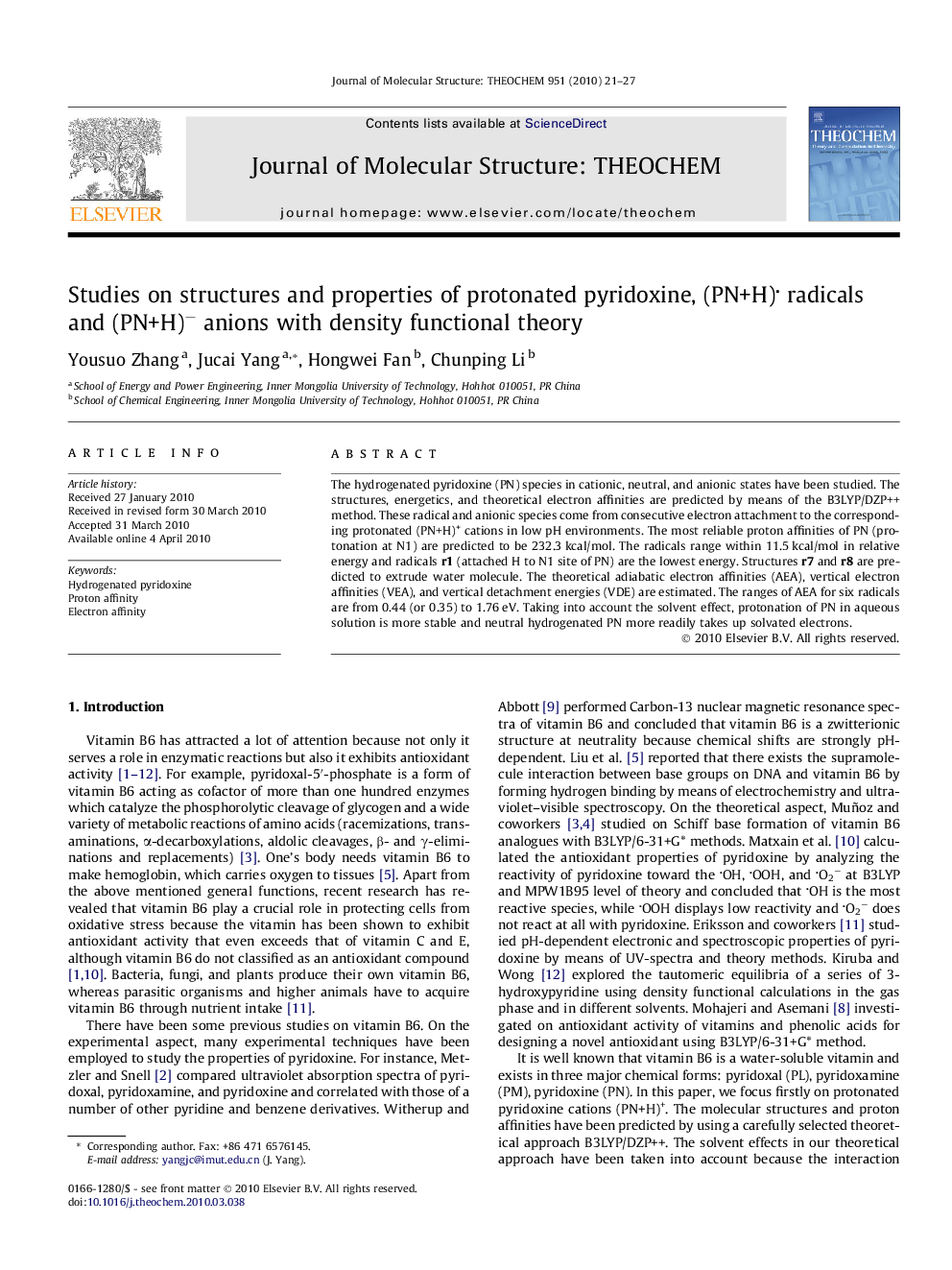| Article ID | Journal | Published Year | Pages | File Type |
|---|---|---|---|---|
| 5416394 | Journal of Molecular Structure: THEOCHEM | 2010 | 7 Pages |
Abstract
The hydrogenated pyridoxine (PN) species in cationic, neutral, and anionic states have been studied. The structures, energetics, and theoretical electron affinities are predicted by means of the B3LYP/DZP++ method. These radical and anionic species come from consecutive electron attachment to the corresponding protonated (PN+H)+ cations in low pH environments. The most reliable proton affinities of PN (protonation at N1) are predicted to be 232.3Â kcal/mol. The radicals range within 11.5Â kcal/mol in relative energy and radicals r1 (attached H to N1 site of PN) are the lowest energy. Structures r7 and r8 are predicted to extrude water molecule. The theoretical adiabatic electron affinities (AEA), vertical electron affinities (VEA), and vertical detachment energies (VDE) are estimated. The ranges of AEA for six radicals are from 0.44 (or 0.35) to 1.76Â eV. Taking into account the solvent effect, protonation of PN in aqueous solution is more stable and neutral hydrogenated PN more readily takes up solvated electrons.
Keywords
Related Topics
Physical Sciences and Engineering
Chemistry
Physical and Theoretical Chemistry
Authors
Yousuo Zhang, Jucai Yang, Hongwei Fan, Chunping Li,
